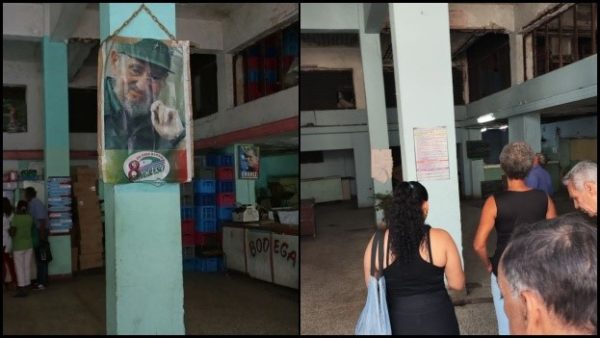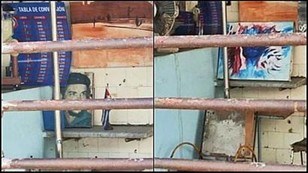Photos of Fidel, Raul & Che Removed from Ration Stores
“No Martyrs or Leaders,” the new directions for the diminished Cuban bodegas

This newspaper was able to confirm that the images of the country’s former leaders were no longer in at least a dozen places where they were previously exhibited.
By Natalia López Moya (14ymedio)
HAVANA TIMES – “They told us to remove the photos,” explains the employee of a bodega (ration store) in Nuevo Vedado, Havana, before the question of a customer surprised by the disappearance of the images of Fidel Castro, his brother Raúl and Ernesto Guevara who, until recently, alternated on the wall with the blackboard that announces the ever-shorter list of available products. “They called from the Ministry of Internal Trade and advised us that we could not have any martyrs or leaders,” he says.
The practice of placing images of leaders of the Cuban Communist Party (PCC), guerrillas and people who fell in combat during the revolutionary battles, was very common in the ration stores. “You went with your libreta (ration book) to buy something, and instead of beans you found a poster with a smiling Camilo Cienfuegos or propaganda from a PCC Congress,” says Liuber, a resident of San Lázaro Street in Central Havana. He was surprised a week ago when he arrived at his bodega and found “nothing; those faces were no longer on the shelves.”
“You went with your ration book to buy something and instead of beans you found a poster with a smiling Camilo Cienfuegos”
This newspaper was able to confirm that the images were no longer in at least a dozen places where they were previously exhibited before the eyes of those who entered. A butcher’s shop on Basarrate Street in El Vedado, which until recently showed a portrait of Ernesto Guevara, with a beret and a thin beard, no longer had the photograph, previously located on the table behind the counter.
“It seems they don’t want people to continue taking photos of the bodegas and butcher shops without food but full of propaganda and posting them on social networks,” says another bodeguero in Old Havana who also received the “direction from above” to remove the images “that had been there for more years than the tomato sauce that didn’t arrive for the libreta.”

However, the employee clarifies that the new regulations have not reached them in writing. “They told us at a meeting that the counterrevolution was using the photos they took inside the bodegas to create popular discomfort and associate the leaders of the process with the shortages.” The woman regrets the decision because “those images attracted tourists, who came in, started talking to us and some even left us a little gift.”
Now, the little rice that arrives every month for the standard quota does not pose for the cameras next to the face of a leader sheathed in his olive green uniform, and the sugar that is delayed in the supply no longer shares space with a poster of a guerrilla with a rifle on his shoulder. The political altars can no longer be next to the meager ration of food that is sold in the Cuban bodegas and butcher shops.
Translated by Regina Anavy for Translating Cuba





